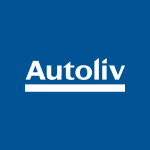Autoliv Q3 2020 Earnings Report
Key Takeaways
Autoliv's Q3 2020 results were better than Q3 2019, with net sales of $2,037 million and adjusted EPS of $1.48. Organic sales grew by 0.4%, and the adjusted operating margin was 10.1%. The company also generated strong cash flow, with operating cash flow of $352 million and free cash flow of $276 million.
Organic sales increased by 0.4%, outperforming global light vehicle production by 4.7 percentage points.
Adjusted operating margin improved compared to both Q2 2020 and Q3 2019.
Operating cash flow and free cash flow were significantly above Q3 2019 levels.
Net debt declined compared to the previous year, and the debt leverage ratio improved compared to Q2 2020.
Revenue by Geographic Location
Forward Guidance
Autoliv anticipates a net sales decline of around 14.5% and an organic sales decline of around 13% for the full year 2020. They expect an adjusted operating margin of around 6%.
Positive Outlook
- Outperformance in all major regions.
- Further pick up of outperformance in the fourth quarter.
- Full year outperformance of around 6pp.
- Structural Efficiency Programs are on track and delivering savings.
- Improved efficiency, optimizing footprint and implementing strategic initiatives outlined last year to support next year being a solid stepping stone on the journey to our 2022-24 targets.
Challenges Ahead
- Continuing uncertainty in the automotive markets.
- Based on customer call-offs and light vehicle production according to IHS.
- Tax rate around 40%.
- Operating cash flow below 2019 level.
Revenue & Expenses
Visualization of income flow from segment revenue to net income
Historical Earnings Impact
Analyze how earnings announcements historically affect stock price performance

